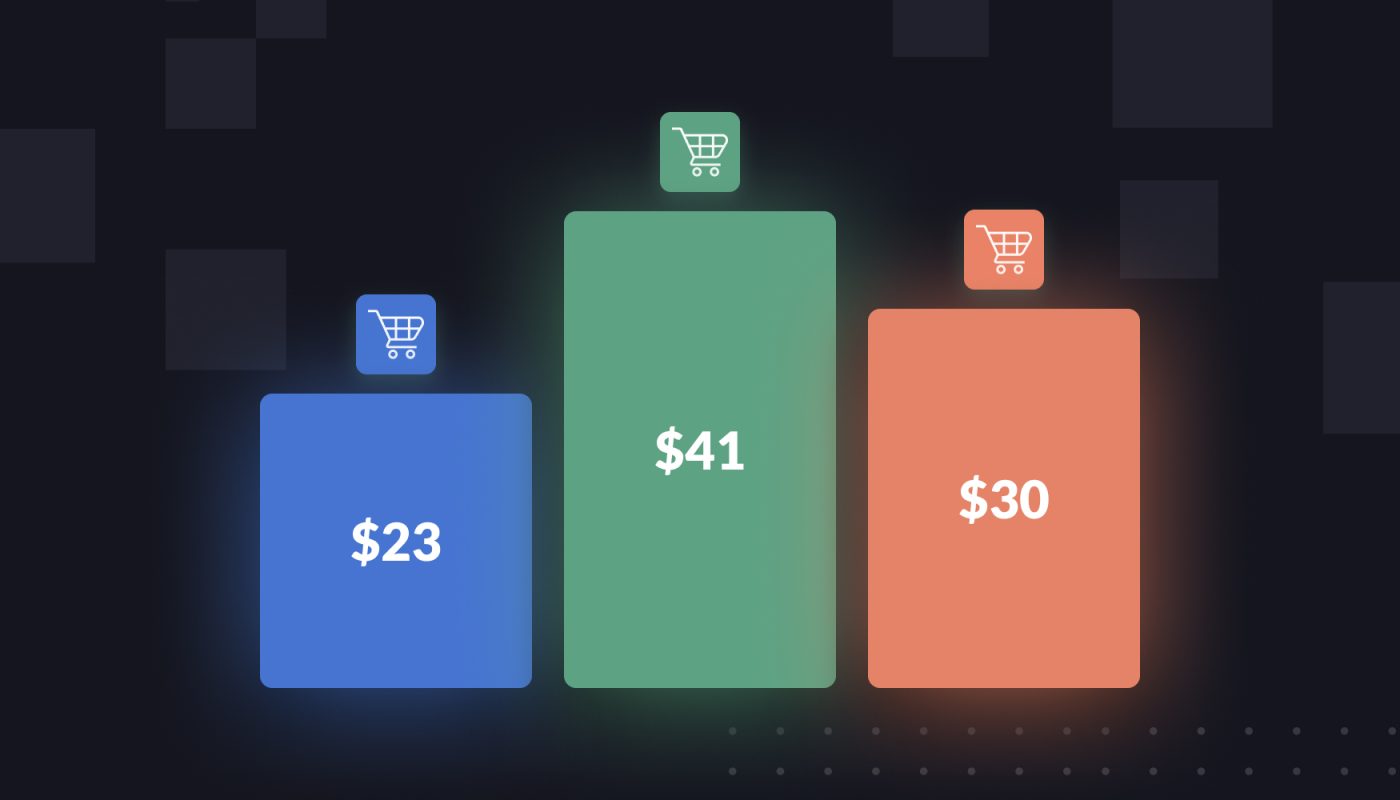Customer Life-Time Value (CLTV) has historically been one of the key metrics through which brands evaluate their success. On Amazon, though, it is tricky to calculate, and it has become a blind spot for many brands.
Today, that’s starting to change.
Essentially, Customer Life-Time Value estimates the total revenue that a shopper will spend on your products during their time with your brand.
A customer with a high CLTV will buy many products, including many high-price products, over time.
A customer with a low CLTV may only ever buy one or two products from you.
Why does CLTV matter? At the simplest level, CLTV tells you how much you can afford to spend to acquire a new customer.
If your average shopper is one and done—say, most people buy your saucepan and nothing more—then you may not want to spend as much money advertising to a first-time shopper.
But if your typical customer buys multiple products or repeat products of yours organically, then spending a lot of money to convert a shopper might be worth it in the long run.
In other words, CLTV is an important lens for evaluating your ad strategy. Let’s say your ACOS is usually pretty high. If you also have a low CLTV, that’s a problem. If you have a high CLTV? Spending a lot up front could be worth it to acquire those new customers.
At least, that’s how CLTV has been typically used. Now, there’s a lot more you can do with that number.
How do you calculate Customer Life-Time Value?
Let’s start by crunching the numbers. On Amazon, calculating CLTV is not the most straightforward process. For the most part, only brands using Seller Central can do it.
Vendor Central users have historically been out of luck—with one major exception we’ll get to below.
To calculate CLTV on Amazon, navigate to your Fulfilled Shipments report on Amazon. Select a time window to measure, and then export the report.
Once you download this report, you’ll find a list of hashed buyer email addresses. You can use them to calculate CLTV.
Step 1: Calculate the average purchase frequency of your products (average purchase frequency = total number of unique orders / total number of unique customers).
Step 2: Calculate the average purchase value of all of your products over the chosen time period (average purchase value = total revenue / number of orders).
Step 3: Multiply the average value of your products by the average purchase frequency, and you have your average customer value.
Step 4: To make this number a customer lifetime value, just multiply that average customer value number by the average number of years that a shopper buys from you. You might have luck finding the lifetime stat based on your DTC channel. In e-commerce, a customer lifetime is typically 2-3 years.
Sounds complicated? If you use Intentwise Analytics Cloud, for what it’s worth, these calculations display (and refresh) automatically for you:

Why bother? Unlocking this CLTV number is great because it tells you how much upfront spending your typical customer is worth.
You can also see how CLTV differs based on product. Do shoppers who buy your premium coffee beans have a different CLTV than those who buy your regular beans?
The downside is that this classic way of measuring CLTV is pretty broad. Sure, you can see how much your typical customer spends after converting. But you can’t segment shoppers based on their specific CLTV.
What if you wanted to tailor a different strategy to shoppers based on CLTV?
How to get granular with Customer Life-Time Value
Amazon Marketing Cloud, Amazon’s powerful new analytics platform, has leveled up CLTV calculations.
As you may know, Amazon Marketing Cloud tracks every customer event through a unique, anonymized user_id. That means it’s easy to say that the same person who bought a spatula from your brand after clicking your ad later purchased a saucepan organically.
The beauty of AMC is that it lets you get far more granular with your CLTV. You can:
Understand how CLTV varies based on ad type. How does the CLTV of a DSP-attributed shopper differ from the CLTV of a sponsored-ad-attributed shopper?
In Intentwise Explore, our platform to simplify and scale AMC, we can display this easily for you:

Segment your shoppers based on CLTV. AMC allows you to build custom audiences of your choosing, which is a feature that comes in extremely handy for CLTV.
With AMC, you can create distinct audiences of customers who have high CLTV versus those who do not.
That can inform your advertising strategy: If you know someone is already a big spender on your brand, you might run different ads and market different products to them than to someone who spends very little.

Predict a shopper’s CLTV. DSP’s new predictive lookalike audience feature, which it announced at unBoxed, takes this a step further.
Let’s say you push that high CLTV audience you created in AMC to your DSP account. Create a lookalike audience of that group in DSP, and suddenly you have a pool of shoppers who are very likely to be high spenders if they convert.
In other words, you can leverage Amazon’s data to predict which shoppers will have high CLTV—and which will not—before they ever even buy from you.
You can’t use Customer Life-Time Value without a data strategy
This all sounds exciting, right?
The reality is, you can’t understand and implement CLTV without a 360-view of your data. For example: CLTV doesn’t mean much if you don’t know your customer acquisition costs. After all, the point is to measure how much spend—and what kind of spend—is worth it in the long term.
Want to calculate your customer acquisition costs by product? You’re going to want to have a highly organized view of your data. You should tie together all of your ads and retail data, for example, and be sure that it refreshes automatically so you aren’t constantly downloading reports.
(Want more content like this? Be sure to subscribe to our newsletter.)







